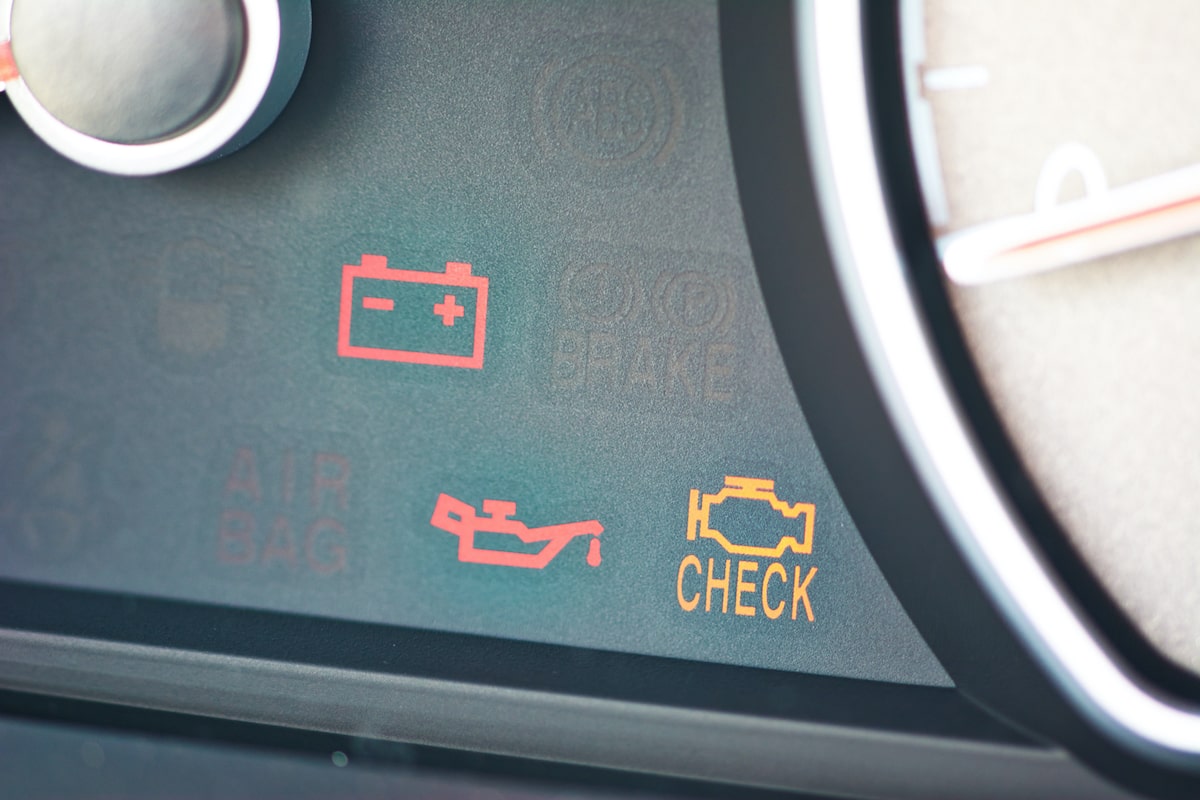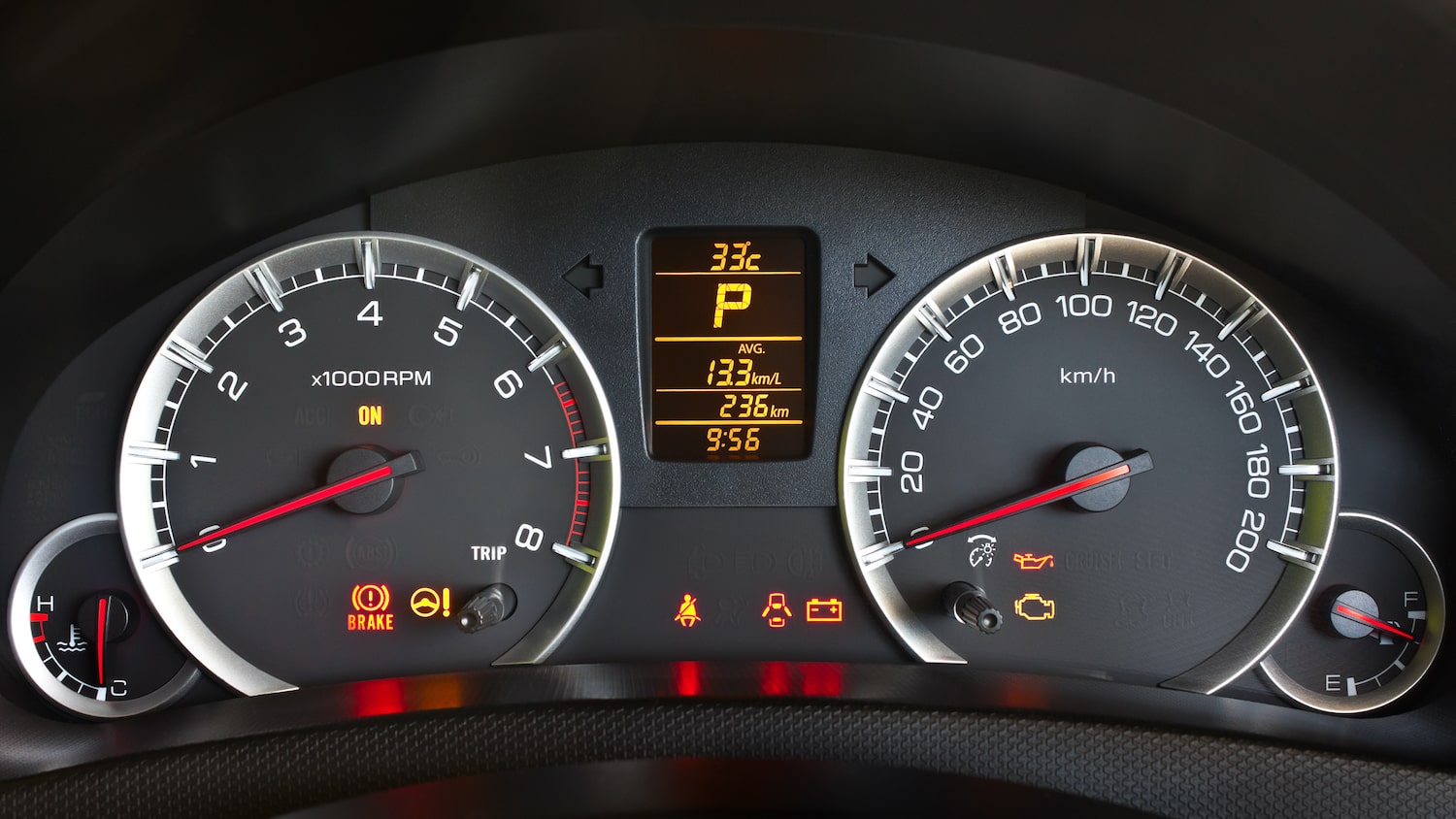You’re stuck in traffic on your daily commute when suddenly you notice something different about your dashboard. At first, you can’t quite put your finger on it, but then you realize: there’s a little light that looks just like an engine. It isn’t usually there, so what does it mean? And just how much should you be panicking right now?
The truth is, the ‘check engine’ light could be on for many reasons—ranging from a slight concern to a full-blown emergency—and it can be tough to pinpoint which is triggering yours. With the most expensive ‘check engine light’ repair costing over $7,000, it’s never something you want to put off until later. Let’s go over what might be going on under your hood and put a stop to any problems before they get worse.
Don’t forget to always check the terms of your warranty before carrying out any work, or you could void your policy. There are some things only a certified mechanic should do.
Your ‘Check Engine’ Light Guide: What Could It Mean?
First of all, is your ‘check engine’ light blinking or still? A blinking light generally indicates an emergency, so stop driving immediately and seek the help of a professional. They can figure out what’s wrong in seconds by connecting a special piece of equipment known as an OBD II reader to your car.
A solid light is still worth looking at without delay, but it may be something you can fix yourself.
Here are some of the more common engine issues and what your ‘check engine’ light might be trying to tell you:
1. Your Fuel Cap Is Loose or Faulty
Why it’s a problem:
When a fuel cap doesn’t seal properly, vapors leak out and air gets in, throwing the fuel system out of whack. Not only does this mean you get fewer miles per gallon, but it increases your car’s emissions too.
What you can do:
You’ll need to determine whether your fuel cap is cracked or just loose. Pull over and tighten it, then carry on driving. If the ‘check engine’ light disappears, congratulations, you’ve solved the problem! If it sticks around, you know you need a new fuel cap. Fortunately, these are easily replaced and can be found pretty cheaply either online or at an auto shop.
2. There’s an Issue With Your Spark Plugs
Why it’s a problem:
Spark plugs can last up to 100,000 miles, but just like every component, they may deteriorate faster. If they aren’t working as they should, they may misfire, causing your acceleration to jolt and your ‘check engine’ light to appear.
What you can do:
Just like your fuel cap, spark plugs are super cheap to replace. If your extended warranty is comprehensive enough, they may even be covered. Try to get them changed as soon as possible because you won’t be going anywhere if they fail completely. You can do it yourself with a quick search online.
3. Your Catalytic Converter Needs Replacing
Why it’s a problem:
Your catalytic converter changes toxic emissions into harmless compounds, but it isn’t just the environment it impacts when it stops working properly. You’ll start to experience poorer fuel economy, and as things get worse, your speed may not increase when you hit the accelerator.
What you can do:
Other faulty parts generally cause a failing catalytic converter (we’re looking at you, spark plugs), so if you keep up with regular maintenance, the chances of anything going wrong are significantly reduced. If it’s too late, however, your only choice is to visit a mechanic. If you aren’t covered by a protection program, you can expect a repair like this to set you back a couple of thousand dollars. Probably not what you wanted to hear.
4. Your Oxygen Sensor Needs Replacing
Why it’s a problem:
Another faulty part that can lead to a broken catalytic converter is your oxygen sensor. Engines can have up to four of them, with each working to keep the ratio of fuel to oxygen just right. Unfortunately, over time, they can get covered in oil ash residue, reducing their sensitivity. This negatively affects your fuel economy and increases emissions.
What you can do:
You want to avoid that catalytic converter bill at all costs, so get these looked at pronto. Most oxygen sensors are easily replaced after a quick read through your owner’s manual, but if you aren’t totally sure, a visit to an auto shop should only set you back a couple of hundred dollars. Also, some powertrain warranties include oxygen sensors as a covered component, so check your contract before handing over any cash.
5. Your Mass Airflow Sensor Needs Replacing
Why it’s a problem:
The mass airflow sensor measures the amount of air coming into the engine and uses this information to tell your onboard computer how much fuel to inject. Like other ‘check engine’ light issues, a faulty one can cause lower fuel economy and higher emissions. It can also cause your vehicle to stall.
What you can do:
Usually, a faulty mass airflow sensor (MAF) is the result of a bad air filter. By sticking to your manufacturer’s suggested maintenance cycles and replacing your air filter regularly, you can avoid potential issues. Though a MAF is relatively simple to replace, it’s probably better to have a mechanic look at it. It might not be the only thing going wrong under your hood.
Protect your engine, and your wallet
When it comes to keeping your engine in check, two things can help you: regular maintenance and a good extended warranty. By sticking to a strict maintenance regimen, you can stop problems before they happen. And with a solid extended warranty watching over you, your bank account won’t be affected if something still goes wrong. So take a look at our protection program reviews, and find the best one for your needs and budget.





